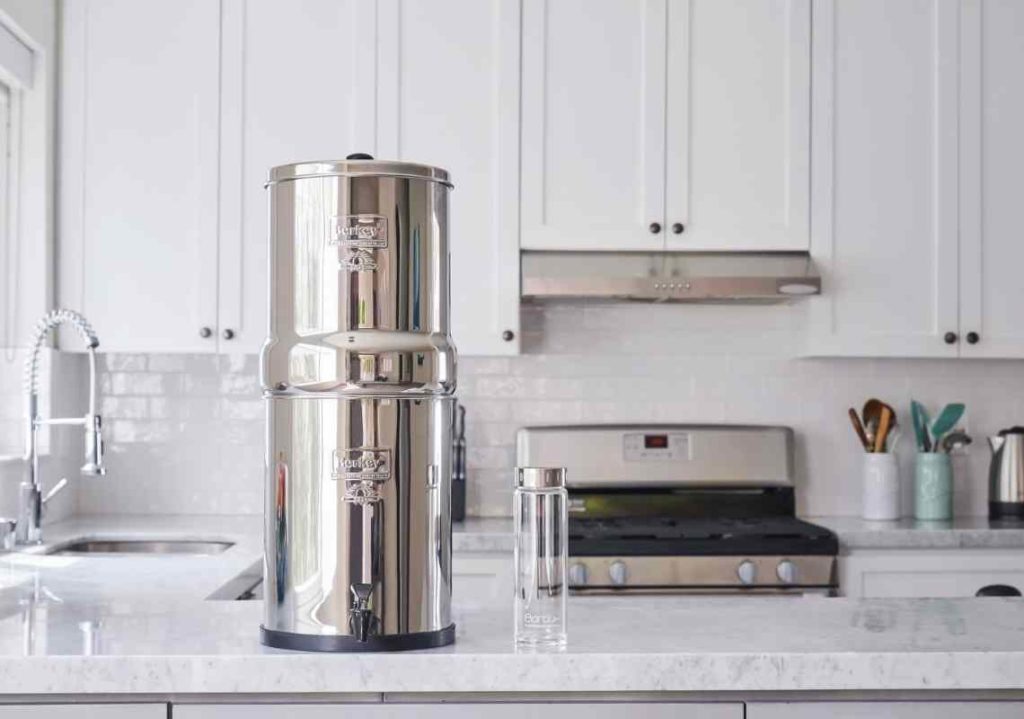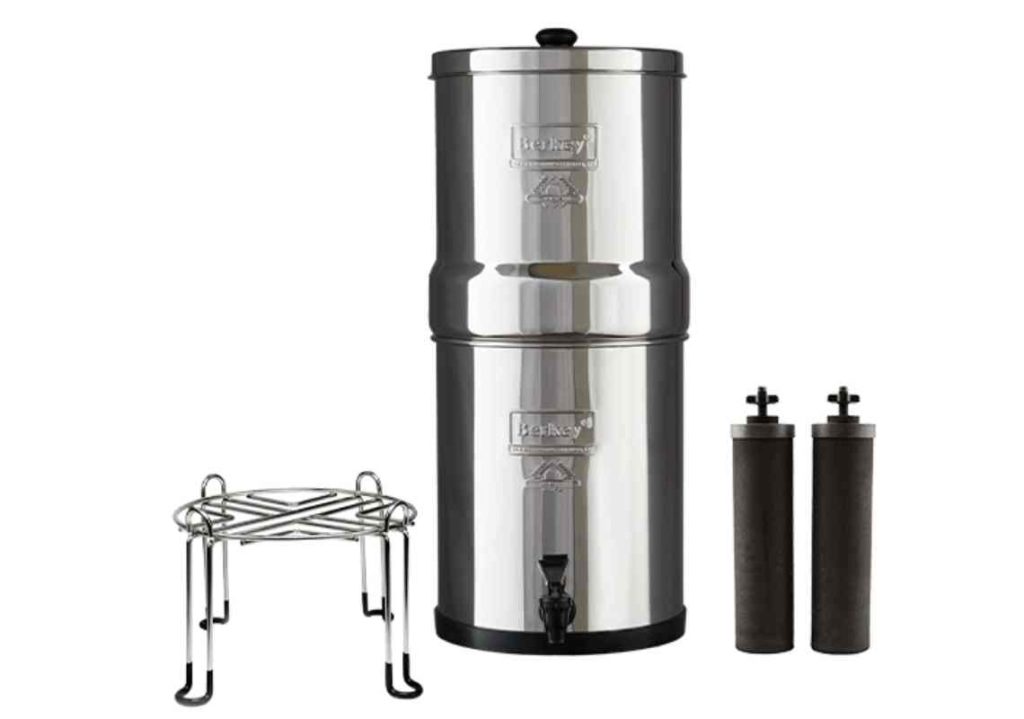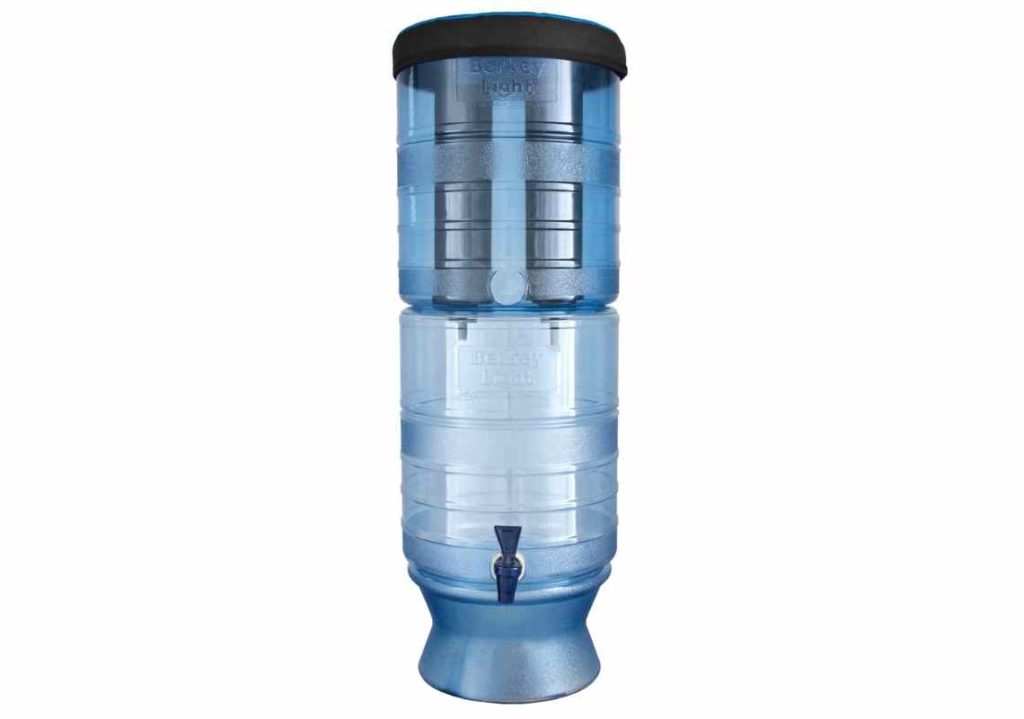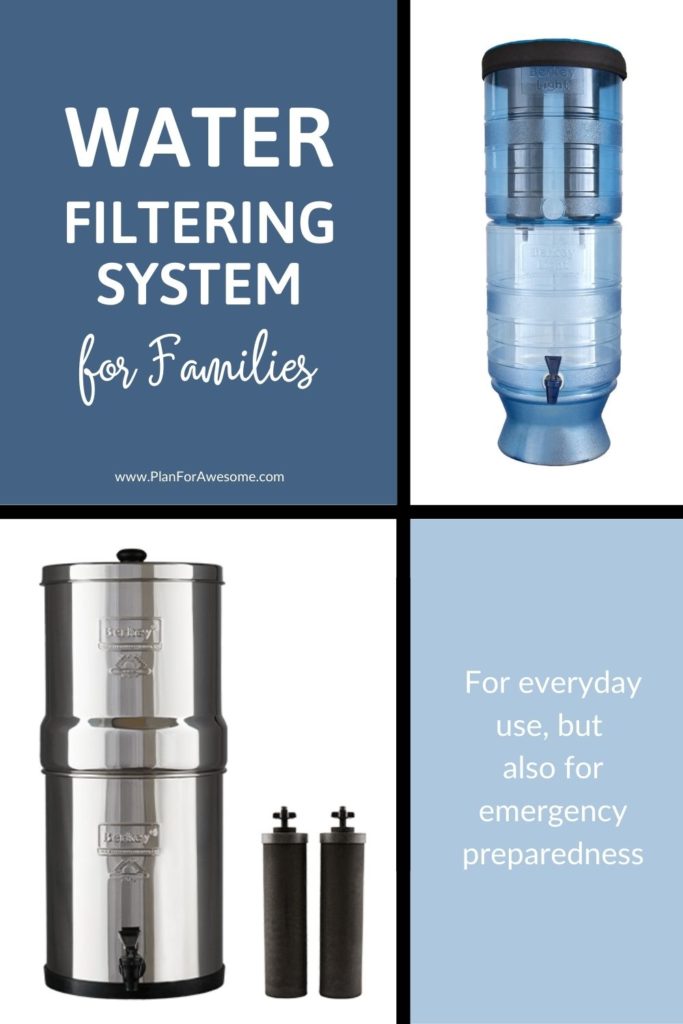Water filtration is a tricky topic, especially when you don’t know what kind of water you’ll be dealing with. We’re going to cover a variety of scenarios and methods, so you can be prepared for anything!
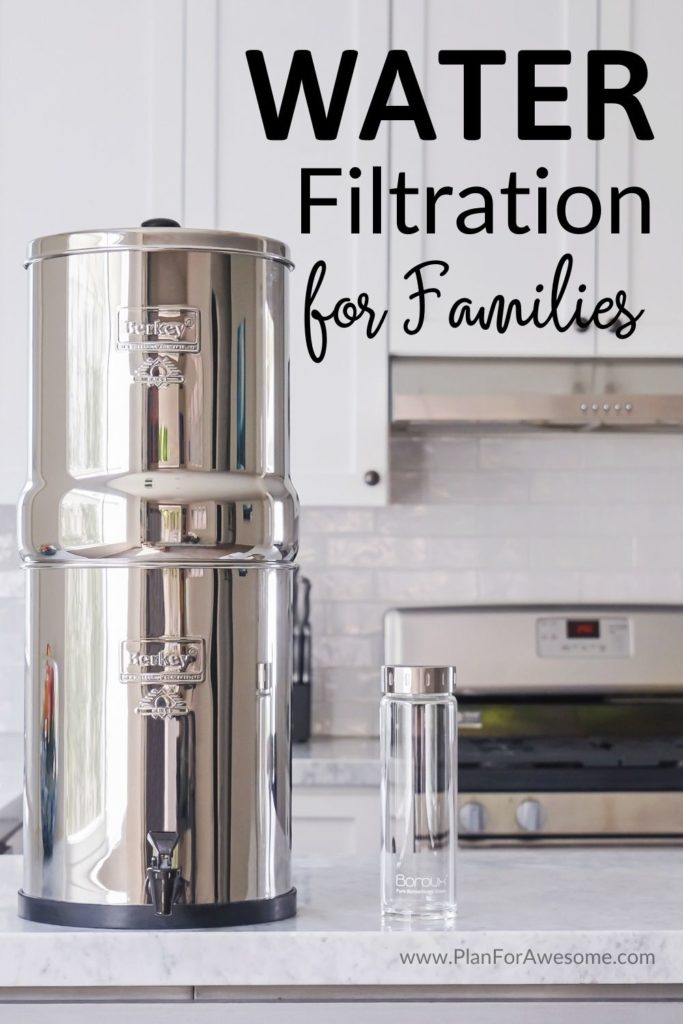
A Few Notes...
- This post was written in collaboration with Derek Edwards, an outdoorsman and adventurer who blogs over at Outdoor with Derek
- This post contains affiliate links, which means if you click on a link and make a purchase, I may make a small commission at no extra cost to you
- To read the post about Long-Term Water Storage, click here. That is Part 1 of the water equation. This here, is Part 2.
Be sure to keep reading after the conclusion to see what we have for our family!
Okay….now on to the goods!
First let’s talk about WHY water filtration matters.
If we have drinkable water stored, why do we need a water filter too?
We already discussed different situations you would want to have drinking water stored in your home in the post about long-term water storage for families.
But that’s only good
(a) until it runs out, and
(b) if you are able to stay in your home.
Even if you have a 500-gallon water tank in your garage, that may not last you as long as you think.
Remember that the American Red Cross recommends having
1 gallon of water per person per day.
That means that even our 500-gallon water tank would only last our family a little over 2 months. And one gallon of water per person per day is pretty dang skimpy.
For more info on water consumption during an emergency and my favorite water tanks, see this post.
The bottom line is, having a water tank or a different type of water storage is only half the solution.
Water filtration is the other half.
For this topic I thought it would be fun to bring someone in who is more the outdoorsy type than I am. Meet Derek Edwards, our guest blogger for water filtration!
Derek is an up and coming outdoorsman and adventure seeker. Always looking to challenge himself in new survival situations, you can follow his blog, Outdoor with Derek.
Take it away, Derek!
One of the most important things you can do for yourself, whether you’re on the trail, in a survival situation, or just living your daily life, is to stay hydrated. There’s a common saying that by the time you feel thirsty, you’re already dehydrated. Plenty of people may roll their eyes at such a folksy sentiment, but the science backs it up. Staying hydrated is crucial, and in an emergency, it can be difficult. The good news is that there are plenty of ways to turn water you find into water you can drink.
Chemical Purification
One of the most common methods of water purification is chemical—either in the form of tablets or crystals. These will usually contain chlorine or iodine. This method of water purification is quick, fairly easy to use, and ideal for situations where there is no available power. But there are some drawbacks. For one, the tablets only last for six months after you open them. And while they’ll kill plenty of microorganisms, they don’t work on certain protozoa. They won’t remove sediment—dirt, silt, and the like—from your water. And if sediment is present, the tablets can take longer than usual to work. Finally, iodine can be dangerous to some people. If you have thyroid issues, or if you’re pregnant or have certain autoimmune issues, you should probably steer clear of iodine.
How to Purify Water Chemically
- Run the water through a cloth filter to remove any organic material
- Add the water purification tablet to your water
- Shake so that the tablet is dispersed
- Wait 30 minutes for the disinfection to work its magic
Boiling Water
Boiling is an easy, safe method for purifying water. Boiling water kills most of the microorganisms in it, including viruses and bacteria. Boil the water for a full minute at a rolling boil (three minutes at higher elevations) in order to make sure that you thoroughly purify the water. A rapid boil stove can help here. Boiling water faster can be useful when you’re dehydrated—or if you just want to get the boiling over with, because drinking hot water isn’t fun.
Like chemical purification, boiling doesn’t remove sediment or heavy metals. However, boiling is a lot more natural and comes with fewer health complications than iodine. Nobody wants to drink dirt, but if the dirt’s been disinfected, that can go a long way towards feeling comfortable.
How to Purify Water by Boiling
- Run the water through a cloth filter to remove any organic material
- Bring the water to a rolling boil for at least one minute
- Remove the water from the heat source and allow to cool
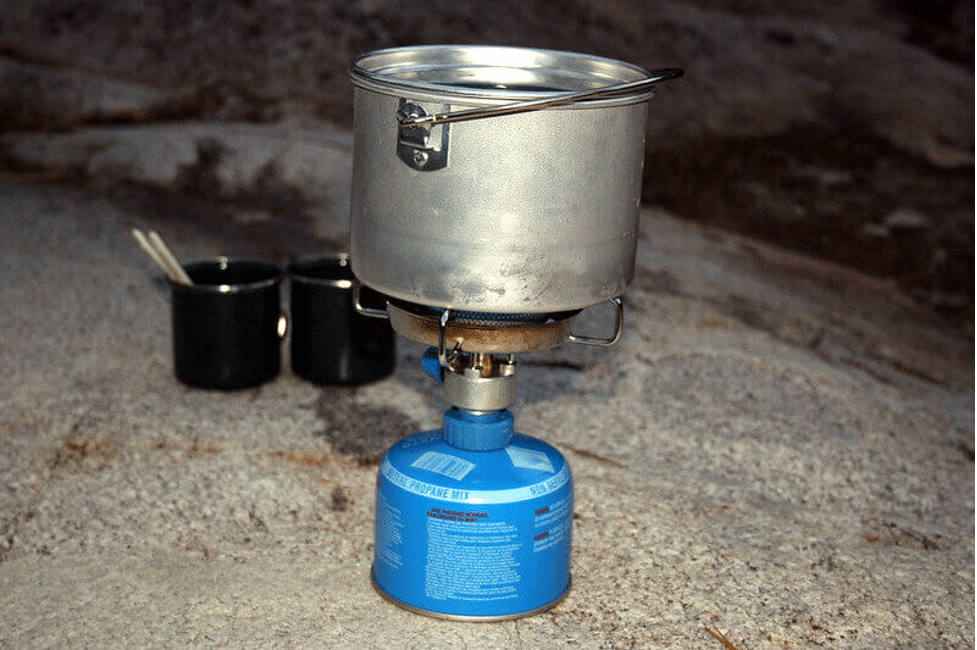
Distilling Water
Distilling water is the process of getting the water to boil into a steam, and then condensing the steam back into a purified water. While this means of purifying water can work regardless of the original water source or level of contamination, it really shines when dealing with ocean water, which normally cannot be consumed due to its high salt content. There are many different ways to distill water, from simple setups that can be used on a stove or cooktop, to more complex contraptions incorporating copper wire, flasks, and pressure cookers.
Regardless of how you go about distilling your water, the process can take a long time and risks the potential of the water vapor escaping. So if you’re in an emergency and running low on water or need to purify water quickly, distilling may not be the best option to pursue.
How to Purify Water by Distillation
- Fill a pot with the water you’re looking to distill
- Place a bowl in the center of the pot to catch the condensed vapor
- Place the lid of the pot in an upside down position
- Heat the pot so that the water inside comes to a boil
- Place something cool on the lid of the pot
- Once all of the water has boiled, transfer the distilled water from the catcher bowl into another container
Water Filters
Water filters—usually attached to a drinking container—are a great way to make water safe to drink. Just pour or pump the water through the filter in order to purify it. Filters catch plenty of micro-organisms, like protozoa and bacteria. Some filters may also include iodine to wipe out viruses. One of the best-known filters is Lifestraw, (affiliate link) which is an ultralight personal straw filter used all across the world.
However, not all water filters are created equal. Before buying a filter, you’ll want to check to confirm what it does or doesn’t remove. Water filters don’t usually remove chemicals or heavy metals, which can be an issue depending on where you’re hiking. And some filters require you to pump water through them, which can be exhausting, especially if you’re already thirsty or if you need a lot of water.
One of the best water filters on the market is the Berkey (affiliate link). If I were shopping for a water filter, this is what I would go with.
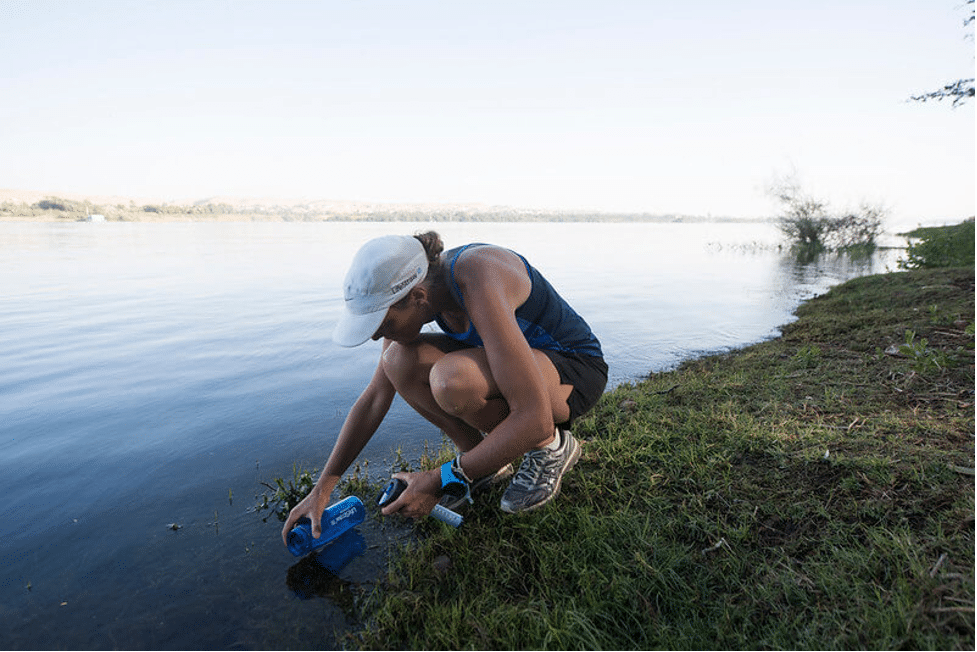
Water Purifiers
Water purifiers are similar to filters, but heavy-duty. They usually rely on carbon or iodine (or both) to kill all biological hazards in the water. Some of the more serious filters can even remove contaminants like heavy metals and chemicals. These filters tend to be larger and heavier, so not great for your grab bag. You’ll want to leave them at your base camp (or at home) instead of carrying them around with you. But they can definitely make your water about as safe as it’s going to get.
UV Purification
UV pens (or special UV water bottles) are a common mode of purifying water. This will kill bacteria and viruses, but like chemical purification, it can take longer if the water has sediment in it. Some people will filter water and then run it through UV purification in order to make sure they’ve removed everything. This UV pen won an ISPO award in 2013 for reducing our reliance on single use plastic water bottles.
Some people will simply leave a bottle of clear water in sunlight, in an effort to purify it with the sun’s natural ultraviolet rays. While this is better than drinking untreated water, it’s not really as safe as a UV light pen. You should use a more proven method, like a filter, chemical purification, or boiling.
How to Purify Water with a UV Pen
- Run the water through a cloth filter to remove any organic material
- Insert the UV pen into your water
- Stir for 90 seconds
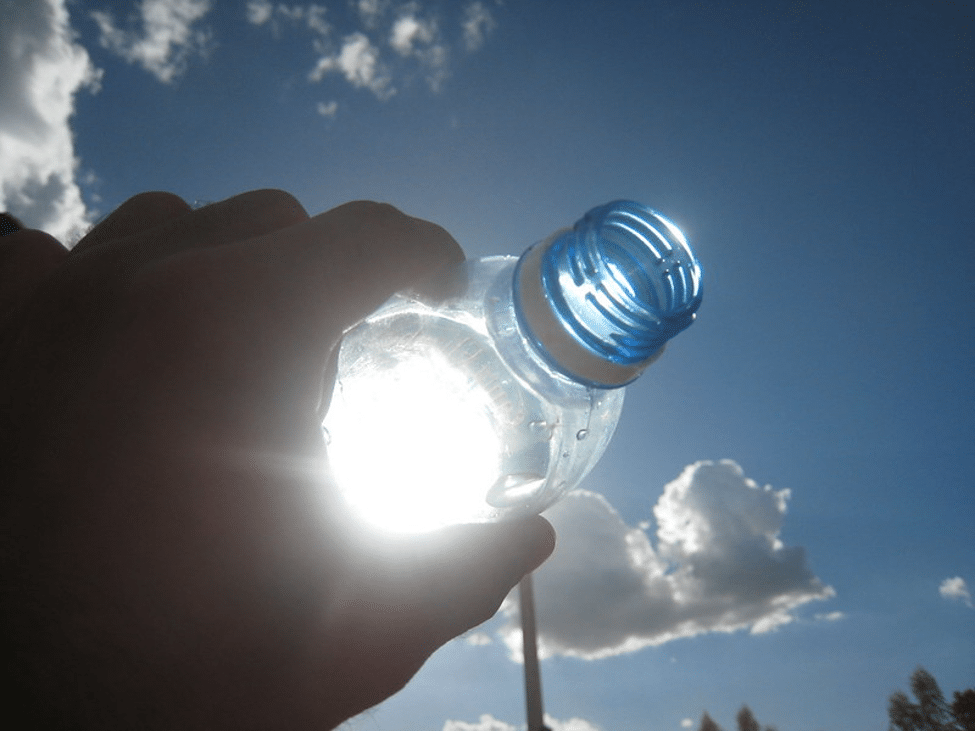
Conclusion
Each method of purifying water is different.
Chemical purification is convenient but can be hazardous to certain people.
Boiling will help you kill all biological threats but may leave sediment.
Filters can catch sediment but leave other threats.
And water purifiers give you safe water but are hard to carry around.
At the end of the day, you’re the only one who can balance the pros and cons of each method and decide what’s right for you. But whatever you do, stay hydrated with plenty of safe, potable water. It’s one of the kindest, most important things you can do for yourself.
Thank you, Derek!
What I have for My Family
Okay, now that you’ve gotten an overview of the different methods of filtering/purifying water, it’s time to get serious about what types of situations you are preparing for.
No one can tell you what’s best for your family, but I wanted to share with you what I have done for mine.
72-Hour Kit Water Filtration
We have a couple LifeStraws in our 72-hour kits.
I like the LifeStraw option because it is small, light, and user-friendly. I love that you can drink right out of the bottle. It doesn’t get more convenient than that!
And it does a phenomenal job at what it filters.
We also have a Berkey water filtration system. (affiliate link)
Berkey is one of the best water filters out there. And when it comes to making drinking water safe, I want the best. This is not something I am willing to sacrifice quality on.
Although a Berkey is a bit of an investment, it actually cost far less than I thought it would.
Quick Rundown on Berkey Filters
Each Black Berkey Filter can filter up to 3,000 gallons of water and can be cleaned up to 100 times. Each system has a maximum number of filters that can be used at a time, but you can choose how many filters you’d like to use. The more filters you use, the more filtered water you get in a given amount of time.
They also have fluoride filters available!
Berkey has a lot of different sizes and options.
Ultimately, we decided on the biggest one they offer. If you don’t know this about me yet, I am a #gobigorgohome kind of girl. So it was bound to happen.
The One We Have
Here were my reasons for getting the Crown Berkey (affiliate link), which is the biggest one:
- At 6 gallons, this is the highest capacity system they offer
- We have 7 people in our home
- If evacuated to a shelter-type-situation, this would be able to filter water for more than just our family
- If we were going to spend the money on something to take with us to evacuate, I figured we might as well get something we could use on the daily
- We already pay for a replacement filter for our fridge every 6 months
- Berkey filters last way longer and are a MUCH better filter than the crappy ones that go in your fridge
The One We Almost Got
If this one had a bigger capacity, I think I would prefer this one. It has the same filters, so you get the same water, but I like how you can see the water level at all times, in both the chambers.
The stainless steel one is pretty, but it’s annoying to not know exactly where the water level is, and how close we are to needing to add more water to the top chamber.
So if you aren’t looking for the absolute biggest one they have, I would recommend the Berkey Light (affiliate link), that has a capacity of 2.75 gallons at a time.
Bottom Line
Have a plan for filtering water in the event of an emergency. Even if you have stored water…that only helps if you can stay in your home. If you have to leave, a 500-gallon water tank or even a 55-gallon drum isn’t going to do you any good.
Even if you are able to stay in your home, the amount of water that is feasible for most families would not last very long. Water filtration is essential to your emergency plan!
Whether you decide to get a Berkey, a different type of water filter, or use a different method of filtering entirely, make sure you have a plan and that you have the necessary things to carry it out!

